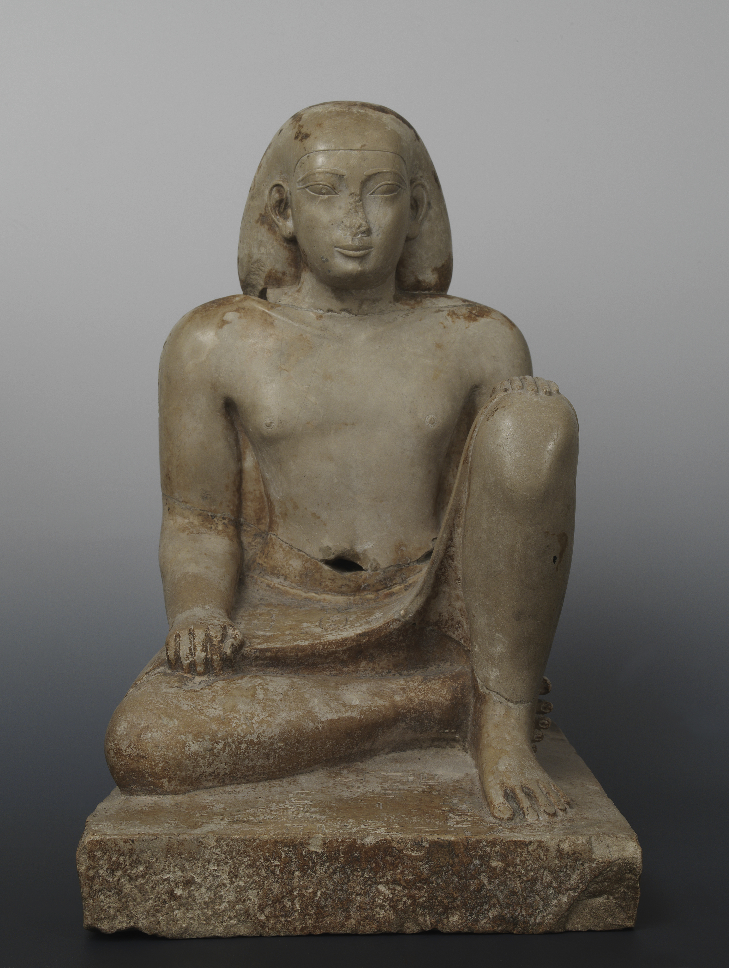
- Egypt, Late period, 26th Dynasty (660–610 BC)
- Compact limestone
- Inv. 158
Statuette of the official Bes
The inscription on the base of this statue reads ‘Count and Prince, Companion of His Majesty’. Bes is portrayed sitting in a position that was widely used in the Old Kingdom (c. 2660–2180 BC), at the beginning of the New Kingdom (c. 1550–1070 BC) and again by the officials, including this courtier, who served Psamtik I.
The statue is sculpted in fine-grained compact limestone that is similar to marble. The elegance of the figure’s stylized face, with its shy smile, contrasts beautifully with his solid limbs and torso, which is finely modelled to reveal protruding clavicles and a pronounced depression of the thorax. The figure transmits a sense of great serenity and dignity that was characteristic of a period of harmony – the so-called Saite Renaissance – which witnessed a return to the original forms of Egypt’s glorious past.
MacGregor Collection. Acquired by Calouste Gulbenkian at the sale of the MacGregor Collection, Sotheby’s, London, 8 July 1922 (cat. 1628).
H. 32.2 cm; W. 20.9 cm
Boothmer 1960
B. V. Boothmer, Egyptian Sculpture of the Late Period. New York: The Brooklyn Museum, 1960, pp. 34–5, no. 29, pl. 27, figs. 60–1.
Assam 1991
Maria Helena Assam, Arte Egípcia. Lisbon: Calouste Gulbenkian Museum, 1991, pp. 80–3.
New York 1999
Katharine Baetjer and James David Draper (eds.), 'Only the Best'. Masterpieces of the Calouste Gulbenkian Museum, Lisbon, exhibition catalogue. New York: The Metropolitan Museum of Art, 1999, p. 26, cat. 8.
Goffen 1995
Rona Goffen (ed.), Museums Discovered. The Calouste Gulbenkian Museum. Fort Lauderdale, Florida: Woodbine Books, 1995, pp. 28–9.
Lisbon 2001
Calouste Gulbenkian Museum. Lisbon: Calouste Gulbenkian Museum, 2001, p. 20, cat. 5.
Araújo, 2006
Luís Manuel de Araújo, Egyptian Art. Calouste Gulbenkian Collection. Lisbon: Calouste Gulbenkian Museum, 2006, pp. 120–3, cat. 28.